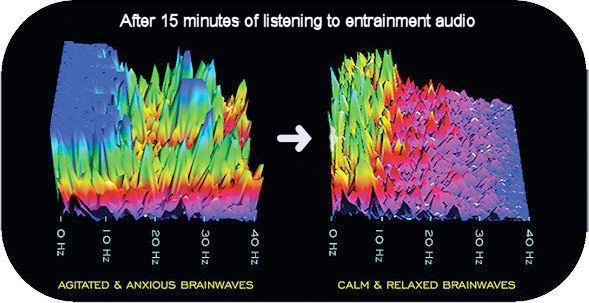
The Discovery of Binaural Beats
Let’s recap precisely where we are right now.
We’ve figured out what brainwaves are. We understand that certain brainwave patterns bring about certain states of mind. And we’ve learned that some individuals have used light to entrain the brain.
We know that if we can expose the brain to a particular frequency, through one of the senses, that the brain will naturally entrain (follow) that frequency.
Then something happened, way back in 1839...
A Prussian physicist and meteorologist known as Heinrich Wilhelm Dove uncovered something we now call “binaural beats” - although at the time he didn’t have the scientific validation to prove his discovery.
H.W. Dove found that by playing two differently pitched sounds into each
ears, the difference between the two pitches is realized inside the head – a
"perceived" pulse or beat, also known as a binaural beat.
For example, if you played 400Hz into the left ear, and 410Hz into the right ear, the difference of 10Hz is actually
'heard' by the brain.
In other words, he found a way of playing a really low frequency directly to the brain. And, as we already know, when the brain is exposed to such frequencies, it will automatically follow them - which will, in turn, bring about the relevant state of mind.
So, for 10Hz, that means the listener will begin to enjoy feelings of relaxation.
It wasn’t until 1959 that this method actually gained both scientific validation and widespread recognition as a brainwave entrainment technique. It's since become the most widely known method of entrainment.

But that's not all. In time, the science got even better.
First, there came monaural beats, which acted in a similar way to binaural beats, however have the advantage of not requiring headphones, and use a sine wave pulse to generate a desired frequency. They work in a similar way to binaural beats, yet the beat is audible and not merely perceived.
Then, as digital technology improved, 1981 saw the discovery of isochronic tones. This technique involved using fast audio pulses to replicate specific frequencies. So, for a 10 Hz recording, the audio would create 10 tiny pulses every second. In turn, the brain entrained toward that frequency.
It has since been proven that isochronic tones are the most potent (non-photic) entrainment method available - and even more powerful when combined with other entrainment methods.
Ever since the late 1950s, scientists have relentlessly continued exploring brainwave entrainment...
